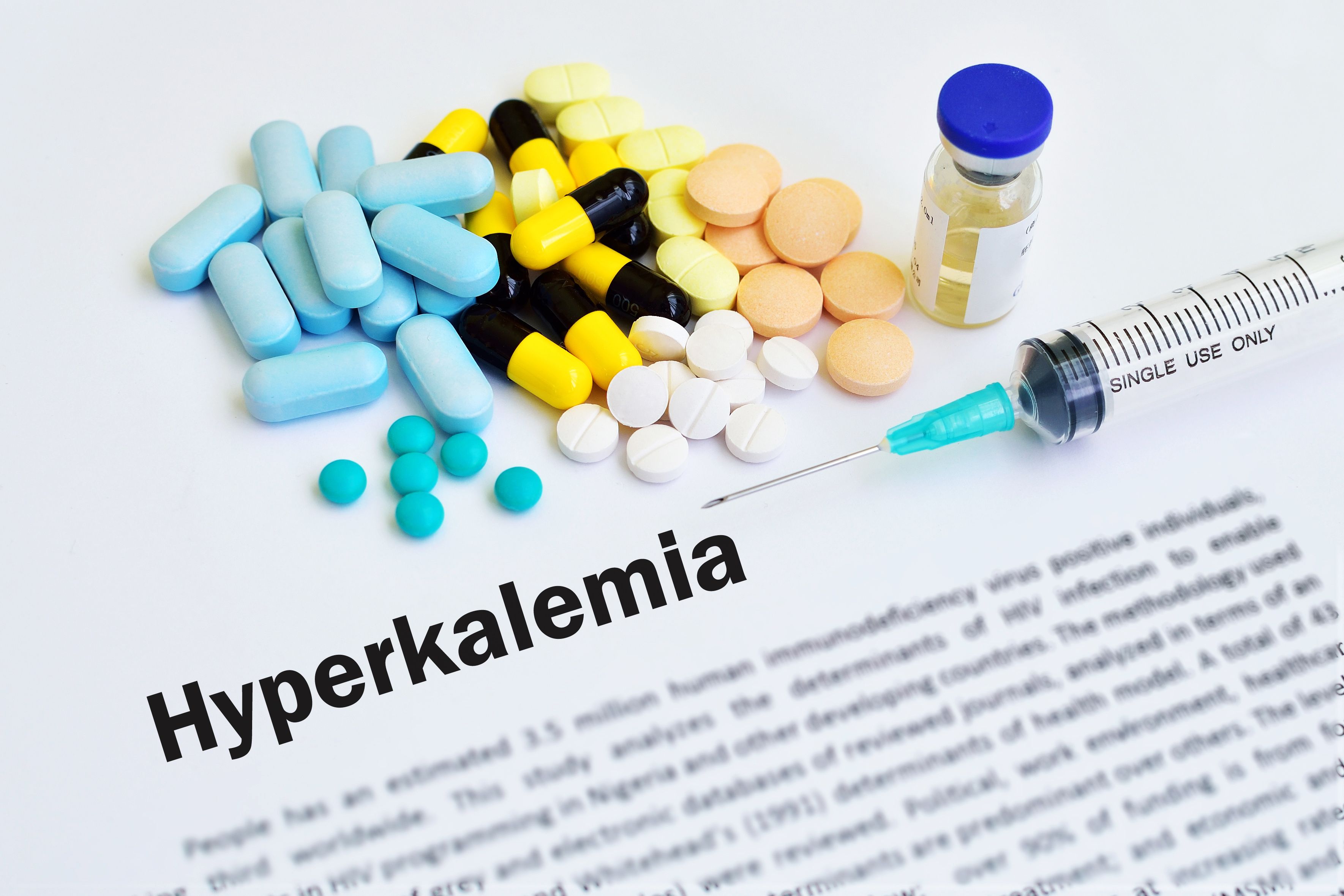News
Article
Common Medications for Diabetic Kidney Disease May Be Linked to Increased Risk of Hyperkalemia
Author(s):
Sodium-glucose cotransporter-2 inhibitors and sodium zirconium cyclosilicate may be paired with these kidney disease medications to reduce high serum potassium.
Diabetes is the leading cause of chronic kidney disease (CKD), but patients with diabetes mellitus (DM) and CKD (diabetic kidney disease [DKD]) are at increased risk of hyperkalemia, according to David B. Mount, MD, associate chief and clinical chief in the Renal Division at Brigham and Women’s Hospital, who spoke in an educational session at the American Society of Nephrology (ASN) 2023 Kidney Week Annual Meeting, taking place November 2 to 5 in Philadelphia, Pennsylvania.
Certain medications for DKD and CKD can even worsen the risk of hyperkalemia and deter practitioners from providing the medication to patients. However, sodium-glucose cotransporter-2 (SGLT2) inhibitors may mitigate this risk.
Image credit: jarun011 | stock.adobe.com

“Our challenge as practitioners is really balancing evidence-based therapies with [these] potassium levels,” said Wendy St. Peter, PharmD, FASN, FCCP, FNKF, from the University of Minnesota College of Pharmacy in Minneapolis, during the session.
Hyperkalemia is a condition caused by too much potassium in the blood, explained St. Peter. Symptoms may include heart palpitations, nausea, muscle pain, weakness, dyspnea, paresthesia, and, in rare cases, disturbed cardiac rhythm. Risk factors include DM, heart failure, and CKD, according to St. Peter.
Patients with earlier stage CKD (stage 3) and DKD could have a greater risk of hyperkalemia than patients with CKD but without diabetes, with one study showing risk of hyperkalemia being 28.6% versus 17.5%, respectively, Mount explained. But patients with higher stage CKD generally had increased risk of hyperkalemia, whether DM is present or not (35.5% and 32.3%, respectively).
Renin-angiotensin-aldosterone system (RAAS) inhibitors are commonly used to treat these 3 conditions, but unfortunately, they can increase blood potassium and contribute to hyperkalemia, according to St. Peter.
“For many years, we’ve known that there is a defect in the conversion of pro-renin to renin [in DKD],” Mount said in the presentation.
Other effective treatments for CKD and DM include finerenone (a non-steroidal mineralocorticoid receptor antagonist [MRA] that can reduce CKD progression or cardiovascular events) and spironolactone (inhibits nuclear MR accumulation and transcription), according to Mount.
These therapies also increase the risk of hyperkalemia, although finerenone does to a lesser degree that spironolactone, according to results from the AMBER study, a post hoc subgroup analysis of patients from the FIDELIO-DKD and FIGARO-DKD studies, Mount said.
SGLT2 inhibitors are already indicated for patients with CKD and DKD, so putting patients on a treatment regimen that includes both drugs could work for hyperkalemia and reduce serious serum potassium, according to Mount.
In a meta-analysis of nearly 50,000 patients, SGLT2 inhibitors were able to reduce risk of severe hyperkalemia by 84% (hr 0.84). These benefits occurred in patients who were taking various types of risk-associated medications, including RAAS inhibitors, said Mount.
Other randomized trials have shown that adding an SGLT2 inhibitor to MRAs (eplerenone, dapagliflozin, and finerenone) can reduce serious hyperkalemia events, Mount said. What’s more, sodium zirconium cyclosilicate (SZC) is being studied as an effective long-term potassium binder to reduce risk of hyperkalemia, according to Mount.
In clinical trials, SZC could significantly decrease serum potassium in as little as 4 hours, Mount said. It can also reduce serum urea concentration, increase serum bicarbonate, and it may have other clinically relevant capabilities that are going to be studied in future trials.
“It's very, very satisfying solid data that adding an SGLT2 [inhibitor] in DKD does reduce serum potassium and decrease the risk of hyperkalemia,” Mount concluded in the session.
Reference
Mount D, St. Peter W. Hyperkalemia in Diabetes and Heart Failure: Optimizing Management to Mitigate Risk. Session. ASN 2023 Kidney Week Annual Meeting. November 2 to 5, 2023. Philadelphia, PA.
Newsletter
Stay informed on drug updates, treatment guidelines, and pharmacy practice trends—subscribe to Pharmacy Times for weekly clinical insights.






